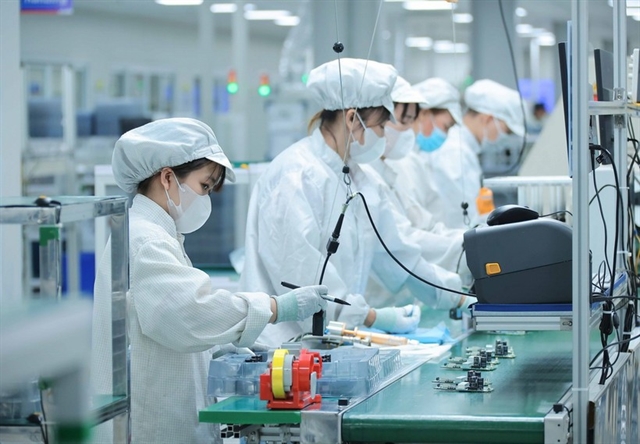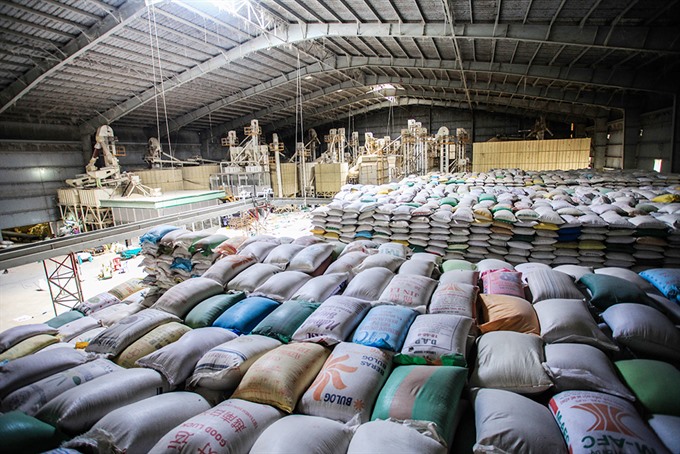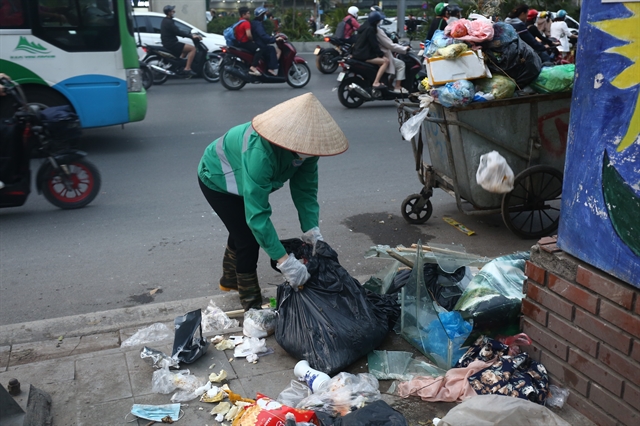 Economy
Economy

Research findings from the Vietnam Institute for Economic and Policy Research (VEPR) showed on Wednesday that Việt Nam’s quarter-on-quarter economic growth in 2017’s third quarter was the highest level in seven years, though overall inflation began to increase in August and continued throughout September after a sharp decline since the year’s beginning.
 |
| Production chain at the Kiên Giang Import & Export Joint Stock Company in Kiên Giang Province. — VNA/VNS Photo Trọng Đạt |
HÀ NỘI — Research findings by the Việt Nam Institute for Economic and Policy Research (VEPR) show that Việt Nam’s economic growth in the third quarter was the highest in seven years, though overall inflation also started inching up in August and continued throughout September after a sharp decline since the start of the year.
According to Nguyễn Đức Thành, VEPR director, quarterly growth for the third quarter gross domestic production was 7.46 per cent, an improvement of 0.27 percentage points from the second quarter, with a forecast of 7.12 per cent for the fourth quarter, bringing the expected annual growth rate to 6.64 per cent.
In particular, agricultural and service sectors have improved their performance, with construction and manufacturing industries growing 12.77 per cent quarter on quarter. Other industrial productivity indicators were also positive.
In the fourth quarter, consumer demand and investment demand is expected to increase sharply as the pace of construction investment disbursement is accelerated. At the same time, exports will likely continue to rise sharply due to favourable developments in the world economy, as well as global trade growth.
Third quarter consumer price index (CPI) growth has increased from 2.52 per cent in July to 3.4 per cent in September. This can be attributed to 20 provinces increasing their overall health care service fees for patients without insurance by 58.08 per cent in September.
Increased prices
Furthermore, 46 provinces and cities increased tuition fees in August and September, which in turn pushed the education sector’s price index up 7.92 per cent in September compared to the same period in 2016.
The transportation price index has also increased after the adjustment of gasoline prices in the third quarter, with growth rates of 5.7 per cent and 6.7 per cent in August and September, respectively.
With food price recovery, credit growth and disbursement pressure, as well as upward adjustment in electricity and public service prices, the fourth quarter inflation rate will mostly likely increase to 4.16 per cent, exceeding the annual target rate of 4 per cent.
VEPR research also indicates that a Prime Ministerial decision allowing Electricity of Việt Nam (EVN) to adjust the average electricity retail price from 3 to 5 per cent based on objective price fluctuations may also create further inflationary pressure.
Another indicator also reinforces the view that inflation will increase, said Thành, mentioning that while the targeted annual credit growth is 21 per cent to ensure an annual overall growth rate of 6.7 per cent, up until the third quarter, actual credit growth was around 10 per cent.
Thus, the credit growth rate will need to increase 10 per cent in the fourth quarter to meet the Government’s planned growth rate. This is equivalent to an infusion of around VNĐ200 trillion (US$8.88 billion) into the economy, which poses a threat not only to inflation but also hints at non-performing loans in the future.
On the other hand, core inflation has dropped slightly against the second quarter to 1.32 per cent, widening the gap to full inflation and reflecting the State Bank of Việt Nam’s policy of prudent money supply. — VNS




